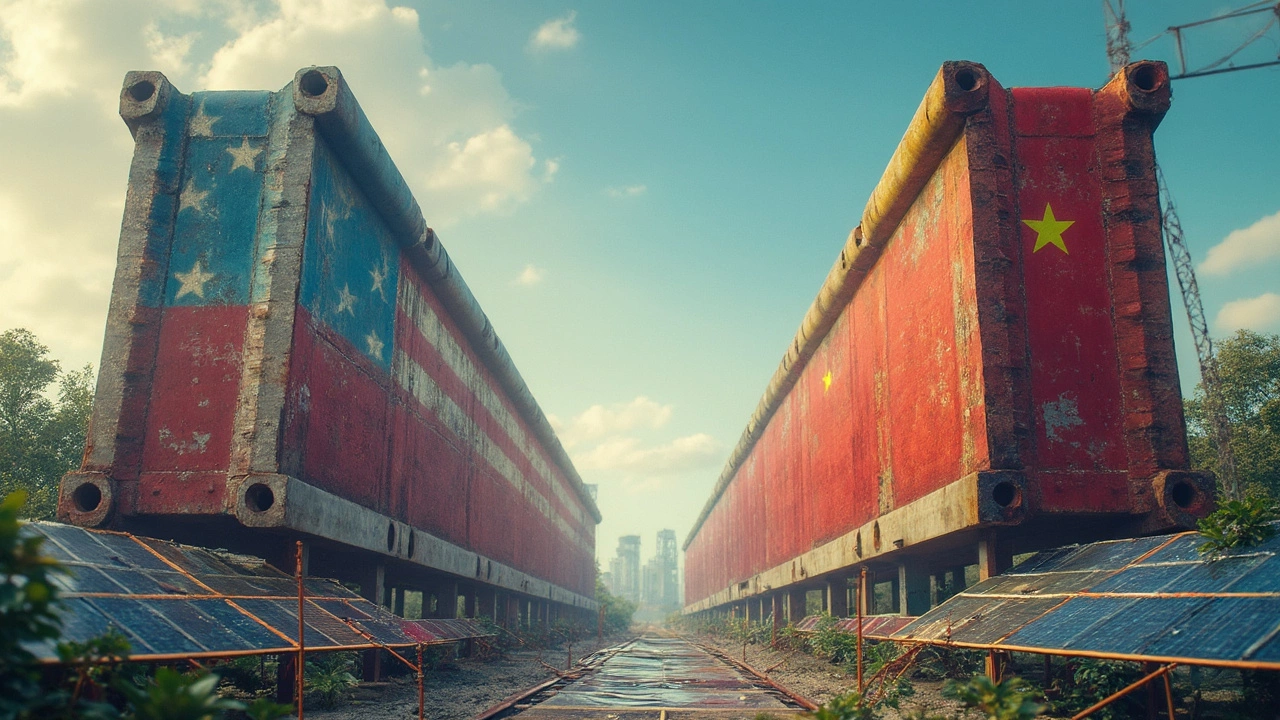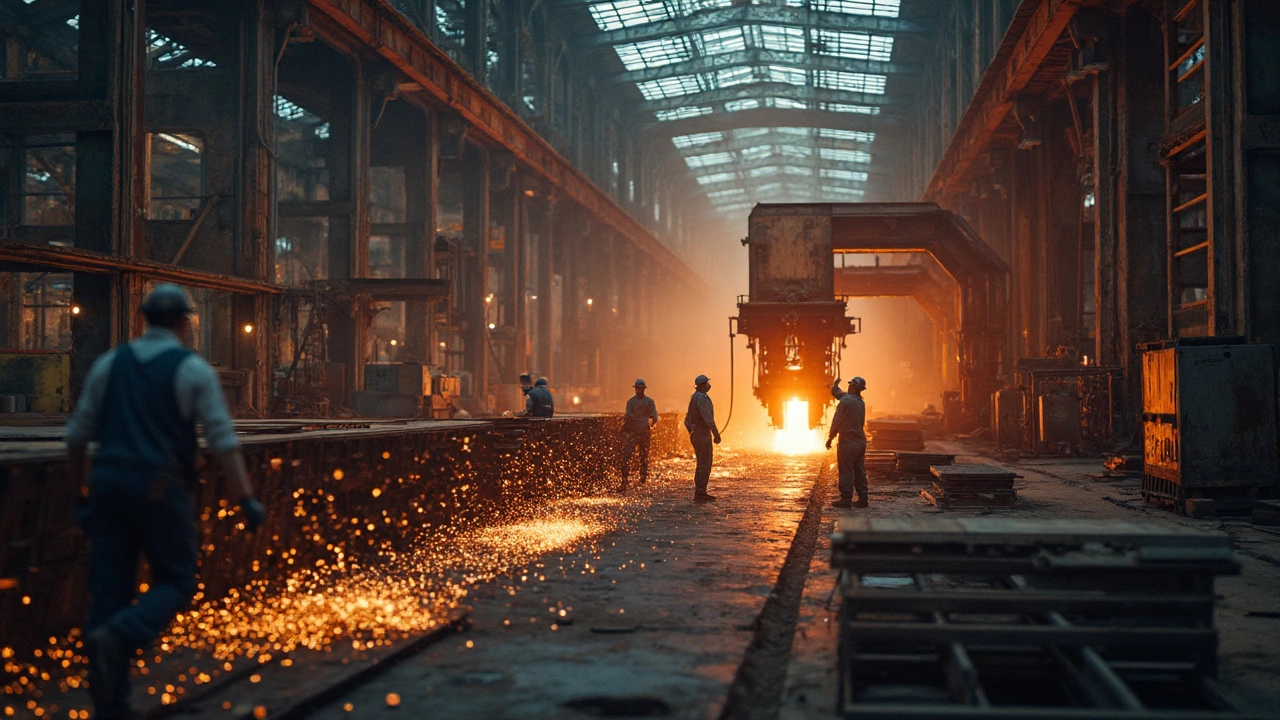When it comes to steel, not all are created equal. If you've ever wondered why American steel often gets a nod over Chinese steel, it's not just about national pride. It's about the nitty-gritty details like quality control and manufacturing practices. Let’s talk about quality control first. American steel manufacturers are sticklers for detail. They have a rigorous set of standards they adhere to at every stage of the production. This isn't just about ticking boxes; it's about crafting steel that stands the test of time. In contrast, Chinese steel has been frequently criticized for not always meeting the same standards, often due to less stringent regulations.
Another biggie? Regulatory standards. The steel industry in the U.S. is subject to strict oversight. Agencies ensure compliance to environmental and safety standards, which isn't always the case in China. This compliance leads to a better product and helps ensure environmental sustainability. It’s no wonder that more industries are opting for American steel, especially when long-term durability and performance can mean saving money down the line.
Quality Control Differences
Quality control is one area where American steel often outshines its Chinese steel counterpart. Let's break it down.
Strict Standards in the USA
In the United States, steel manufacturing plants follow strict guidelines set by organizations like the American Iron and Steel Institute (AISI). These guidelines help ensure that every piece of steel produced meets high quality and durability standards. Each batch is meticulously tested for strength, flexibility, and resistance to corrosion.
Many American manufacturers invest heavily in modern technology to monitor the production process in real-time. This tech-driven approach not only prevents defects but also ensures that any issues are caught early. Talk about meticulous!
Flexible Requirements in China
On the flip side, Chinese steel production can be more of a mixed bag. There are countless factories with varying levels of quality control, partly because the regulations aren't always consistently enforced across the board. Some plants in China produce top-grade steel, but others might cut corners due to less oversight.
This inconsistency often leads to a reputation where some Chinese steel products are viewed as lower quality or less reliable, particularly in demanding industries like construction or automotive where safety and durability are a must.
Real-World Impact
The impact of these quality control differences is significant. For example, in the construction industry, using higher-quality American steel can lead to buildings that are safer and last longer, requiring less maintenance. For businesses, investing upfront in quality often means saving money on repairs and replacements down the line.
| Country | Steel Quality Rating |
|---|---|
| USA | High |
| China | Varied |
Understanding these differences can guide better decisions, whether you’re buying steel for a skyscraper or simply trying to get the best bang for your buck. So, next time you're weighing your options, remember—quality control matters, big time!
Regulatory Standards
Regulatory standards in the American steel industry are a big deal, acting like the unsung heroes of quality and safety. In the U.S., the steel production process is meticulously overseen by several agencies like the Environmental Protection Agency (EPA) and the Occupational Safety and Health Administration (OSHA). These guys don't mess around, setting strict rules not just for the final products but for every step in the process.
Let’s break down what these regulations cover. Primarily, they focus on three key areas:
- Environment: The EPA enforces standards that ensure steel plants minimize air and water pollution. This means cleaner production processes and less harm to our eco-system.
- Safety: OSHA regulations mean American steelworkers operate in safer conditions, reducing hazardous incidents.
- Quality: Standards set by organizations like the American Society for Testing and Materials (ASTM) guarantee that steel meets specific performance criteria for strength and durability.
Contrast this with what's happening in Chinese steel. While China is a major player globally, their standards have historically been seen as laxer. Instances of subpar quality have sometimes stemmed from a focus on quantity over quality and less stringent oversight.
Here’s a specific example: back in 2022, a comparative study demonstrated that American steel products, thanks to stringent regulatory compliance, tend to have longer lifespans—lasting 10-20% longer on average than their Chinese counterparts. That's a pretty significant margin when you consider projects like bridges and skyscrapers depend on it.
So, what’s in it for businesses or builders choosing American steel? Quite a bit. By consistently adhering to high standards, American steel ensures reliability and peace of mind that can rarely be measured but often felt. Now that's something worth noting!

Manufacturing Techniques
When we talk about why American steel often has a leg up, we can't skip over the manufacturing methods. In the U.S., steel producers push the envelope with technology and innovation. They love using electric arc furnaces (EAF) over the more traditional and energy-intensive blast furnaces. What makes EAFs nifty is that they melt scrap steel using electrical energy, which is more eco-friendly and flexible. It allows for better control over the steel's composition, ultimately leading to superior quality. This is where quality steel shines through with lower impurities and better durability.
Advanced Techniques
American plants also embrace advanced techniques like continuous casting and rolling. Continuous casting helps in producing steel that's both consistent and homogenous, which means fewer defects. Rolling, on the other hand, ensures the steel has a smoother finish and improved structural integrity. It's why a lot of the steel from the U.S. ends up being used in high-stakes projects like skyscrapers and major infrastructure.
Automation and Precision
Incorporating cutting-edge automation systems is like second nature to many American steel manufacturers. Robots and high-tech machinery do a lot of the heavy lifting, improving precision and efficiency. This automation helps minimize human error and boosts the quality consistency of steel manufacturing in the States.
Comparative Insights
Just to give you a perspective, let’s look at how these techniques stack up against what's common in Chinese steel production. Chinese manufacturers often rely heavily on traditional blast furnace methods, which, while effective, are energy-hungry and less adaptable. The cost-cutting focus sometimes hampers innovation, impacting the overall quality.
Here's something interesting: a 2023 survey revealed that over 70% of American steel plants had adopted EAF technology, compared to only about 30% in China. These numbers highlight the different trajectories in steel processing strategies in these two regions.
Impact on Industry
The choice between American steel and Chinese steel isn't just a preference—it's a strategic decision for many industries. When the construction sector selects steel, it factors in the performance and reliability over time, where American steel often takes the lead. Remember, the last thing any builder wants is to compromise on materials, and that makes American steel the go-to for many projects.
Construction and Infrastructure
In construction, even a slight difference in material quality can have significant consequences. American steel is favored for building infrastructures like bridges and skyscrapers due to its higher structural integrity and consistency. Studies have shown that American steel's adherence to stricter standards means fewer defects, which translates to fewer repairs and a longer lifespan for projects.
According to John S. Wilson, a renowned civil engineer, "Choosing American steel is about investing in reliability. It's the backbone of infrastructure that withstands the test of time."
Automotive and Manufacturing
The automotive industry, too, reaps benefits. Vehicles require materials that can withstand environmental stress while maintaining safety. American steel's higher quality ensures that car manufacturers can meet safety standards more easily, resulting in robust vehicles. Conversely, parts made with inferior steel could mean more recalls and brand damage.
Economic Implications
On the economic front, choosing American steel supports domestic jobs and reduces dependency on imports. It fortifies the local economy by boosting employment within steel manufacturing plants in the U.S. Additionally, it helps maintain a trade balance, which is crucial for a stable economy.
To illustrate, here is a summary of the benefits:
- Consistent quality leads to fewer disruptions and maintenance.
- Supports domestic job growth and strengthens local industry.
- Reducing imports alleviates trade deficits.
All in all, the decision between American and Chinese steel influences not just the quality of the end product but also broader economic and structural standards. By choosing American steel, industries can ensure longevity, reliability, and economic health, making it not just a better choice but often the best one.
